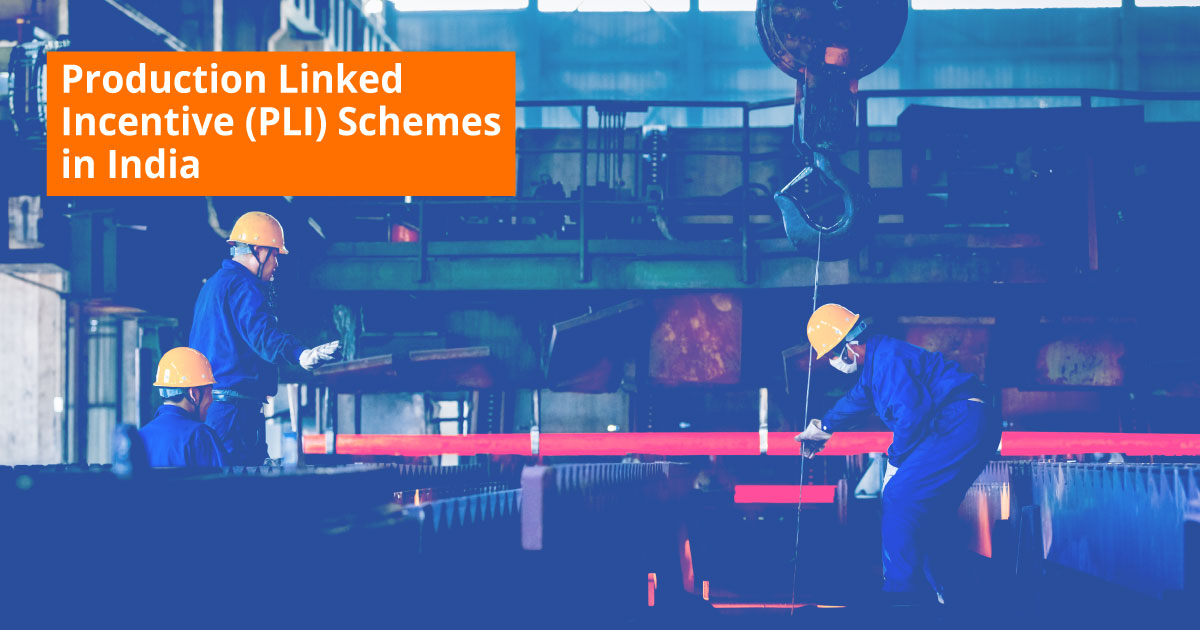Govt disburses Rs 4,415 crore under PLI scheme; low job creation a concern (Indian Express)

- 18 Jan 2024
Why is it in the News?
Recently, the central government has disbursed an incentive amount of Rs 4,415 crore under its flagship Production-Linked Incentive (PLI) schemes for as many as eight sectors.
News Summary:
- The central government, through its flagship Production-Linked Incentive (PLI) schemes, has disbursed an incentive amount of Rs 4,415 crore until October in the current fiscal year across eight sectors.
- In the fiscal year 2023-24, Rs 1,515 crore has been disbursed, compared to Rs 2,900 crore in 2022-23 when payments under the scheme commenced.
- The government aims to achieve a disbursal target of Rs 11,000 crore by the end of this fiscal year.
- According to official statements, the employment generation, both direct and indirect, has exceeded 6.78 lakh.
- As of now, 746 applications have received approval in 14 sectors, with an expected investment exceeding Rs 3 lakh crore.
- Notably, 176 MSMEs are among the beneficiaries of the PLI schemes, particularly in sectors like pharma and telecom.
What is the Production Linked Incentive Scheme (PLI)?
- Production-linked incentive (PLI) schemes were first introduced in India in March 2020, mainly targeting three industries – Mobile Manufacturing and Electric Components, Pharmaceutical and Medical Device Manufacturing.
- The PLI concept has since expanded to 14 sectors to boost India’s manufacturing capabilities and encourage export-oriented production.
- The PLI schemes aim to develop capacities in the local supply chain, introduce new downstream operations, and incentivise investments into high-tech production.
- Mechanism: Under the PLI scheme, both domestic and foreign companies receive financial incentives for manufacturing within India, with rewards calculated as a percentage of their revenue over up to five years.
- Targeted Sectors: The 14 sectors covered by the scheme include mobile manufacturing, medical devices, automobiles and auto components, pharmaceuticals, drugs, speciality steel, telecom & networking products, electronic products, white goods (ACs and LEDs), food products, textile products, solar PV modules, advanced chemistry cell (ACC) batteries, and drones and drone components.
- Incentive Structure: Incentives are determined based on incremental sales, with certain sectors like advanced chemistry cell batteries, textile products, and the drone industry having calculations considering sales, performance, and local value addition over five years.
- Emphasizing research and development (R&D) investments aims to align the industry with global trends and enhance competitiveness in the international market.
Performance of the PLI Schemes:
- Positive Export Growth: India has experienced a substantial boost in mobile handset exports, doubling from Rs 45,000 crore in FY22 compared to FY21, and further estimating exports to reach Rs 90,000 crore in FY23.
- Additionally, in the pharmaceutical industry, India has successfully manufactured 35 active pharmaceutical ingredients (APIs), reducing reliance on imports, particularly from countries like China.
- Overall, the PLI schemes have contributed to exports exceeding Rs 3.2 lakh crore, notably driven by sectors such as electronics, pharmaceuticals, food processing, and telecom.
- Challenges in Implementation: Despite positive outcomes, the implementation of PLI schemes has faced sluggish progress.
- In the fiscal year 2021-22, the government disbursed a mere Rs 10 crore in incentive payouts for mobile handsets, white goods (ACs and LEDs), and the food processing industries combined.
- However, this figure increased to Rs 2,874 crore in 2022-23, according to DPIIT.
- During the initial two years of the seven-year initiative, only 1.46 per cent of the total Rs 1.97 lakh crore incentive outlay was disbursed.
- Some major industries are yet to fully embrace the scheme or initiate significant activities under it.
- Limited Job Creation: The slow start in implementation has resulted in a lower-than-projected number of jobs created.
- While the PLIs were anticipated to generate 6 million new jobs over seven years, the actual figure stands at approximately 300,000 jobs, representing only 5 per cent of the total projection, between 2020 and early 2023.
Challenges in the PLI Scheme:
- Assembly Emphasis Over Value Addition: The subsidy structure within the Mobile and allied Component Manufacturing segment of the PLI scheme primarily incentivizes the completion of phone assembly in India, neglecting the consideration of the actual value added through manufacturing processes.
- Consequently, many mobile phone components are still imported, encompassing critical elements such as display screens, cameras, batteries, and printed circuit boards.
- WTO Constraints and Limited Value Addition: India faces constraints imposed by WTO rules, preventing the tying of PLI subsidies to domestic value addition.
- While India aspires to produce chips domestically, the intricate nature of chip manufacturing and the inability to mandate significant domestic value addition present challenges to realising this goal.
- Ambiguity in Incentive Disbursement: Despite the establishment of an Empowered Committee to oversee fund disbursement across various sectors, the process lacks transparency and clear criteria.
- The absence of well-defined parameters for ministries and departments to determine incentive allocations raises concerns about the fairness and effectiveness of the scheme.
- Absence of a Centralized Database: A notable deficiency in the PLI scheme is the lack of a centralized database that comprehensively captures critical information such as increased production, exports, and the creation of new jobs.
- This information gap complicates the evaluation process, introducing administrative complexities.
- The resulting ambiguity impacts transparency, potentially leading to mischief, thereby weakening the overall policy structure.
Way Forward
The government should evaluate the efficacy of the PLI scheme, taking into account factors such as job creation, cost per job, and the identified challenges contributing to its limited success. Before expanding the scheme to encompass additional sectors, a thorough understanding of its limitations is essential, along with proactive measures to address the underlying issues.
